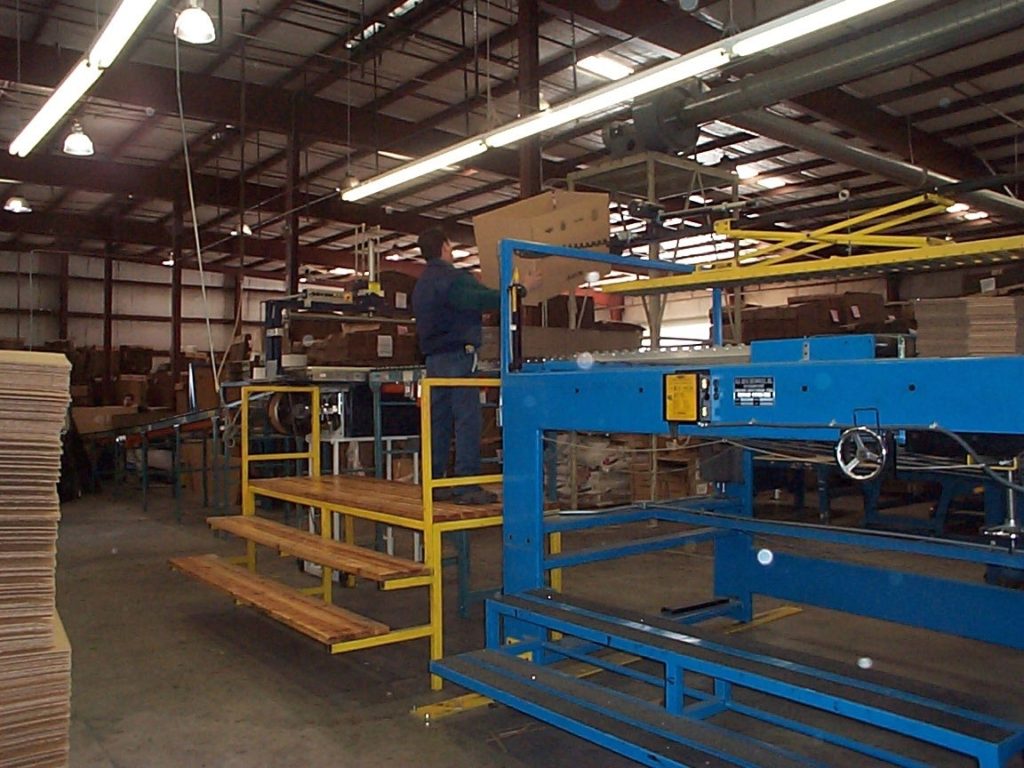BorderLand 12
TUCSON, ARIZONA. Packed and ready to roll early, I scribble the directions to Tucson Container on a notepad and slip it under the transparent cover on my motorcycles’ tank bag, and then I ease into 18-wheeler traffic on I-10 East. Minutes later I exit south and start looking for two very tall palm trees— the landmarks for the entry to Tucson Container, one of a family of privately held companies founded by John Widera.
I’ve come in response to an e-mail from David Zapf, the controller and manager for Tucson Container. He is also a former resident of Dallas. Mr. Zapf has offered to show me their facilities and to explain their business and its relationship to the maquiladora plants across the border in Nogales.
As we walk through the two plants, Mr. Zapf shows me the equipment and offers figures on how much their plant produces. He is also careful to point out that this is a relatively small company that sells to medium size companies. Basically, the company is in three different businesses: die cutting and printing corrugated board containers, fabricating foam inserts for boxes, and reselling a variety of related packaging supplies.
On any given day, he says, they receive five complete truckloads of corrugated board— about 120,000 square feet a day. The board comes from El Paso, usually ordered only the day before, and is quickly used by gigantic presses that can print up to three colors while making the necessary die cuts to create a box. Scrap is collected, bundled, and recycled and the completed boxes are shipped to companies like General Instruments that have maquila plants.
“Our niche is faster service, split shipping, and inventory storage. The maquilas, especially, need this because space in Nogales is expensive. That has driven them to eliminate their raw materials inventory (as much as possible).
“They are now designing facilities with virtually no inventory storage. As a result, a delay crossing the border can cause them to shut down. So they want us to store in Mexico.
“It’s all a problem because you have to go through brokers (to cross the border). It costs about $200 a truckload and for corrugated board that can be a large percentage of the cost.”
Whatever the day-to-day hassles of crossing the border, Mr. Zapf tells me that 80 percent of their output is shipped to maquila plants and that business is growing rapidly. General Instruments, he points out, is a large customer and has projected that its volume will increase from $400 million to $1 billion next year.
“A lot of it is cable TV related. We were the sole supplier until last year. Now, even though they have another supplier, our business with them is still growing.”
Tucson Container Corp. employs about 80 people.
Why am I telling you all this?
Because Tucson Container is a good example of what economists call “the multiplier effect”, the notion that a dollar of activity will generate many more dollars.
How much additional employment can be generated from a maquila job?
It all depends, but most economists would probably feel comfortable with a multiplier effect around three, with jobs ranging from small businesses that sell lunches to housing to jobs that could be miles away— like Tucson Container.
So let’s see just how powerful those maquila jobs are. According to a study by the Dallas Federal Reserve Bank there are now more than 3,200 maquila plants along the 2,000-mile border from Brownsville to Tijuana, with the largest concentrations in Ciudad Juarez (across from El Paso) and Tijuana, south of San Diego. Direct employment in these plants is over 1.1 million.
That means total job creation from the maquiladora plants could be another 3 million jobs.
Next: Born to be wild?
Borderland
Starting the journey: Riding into Laredo
A statistical picture of life along the border
Austin: The incredible disappearing Slacker
San Antonio: High Times and Low Water
Yturria Land and Cattle and El Canelo Ranch: Where’s the Beef?
Brownsville: Lifeguard on the Rio Grande
McAllen: Fields of dreams
All roads lead to Crystal City
Big Bend and the bridge at Presidio
Marfa: Herds of tomatoes, as far as the eye can see
Tucson: Containing growth
Tucson: Born to be wild?
Yuma and the dusty road to Mexicare
San Diego: The Ultimate Crop
Notes, mile marks and pictures
This information is distributed for education purposes, and it is not to be construed as an offer, solicitation, recommendation, or endorsement of any particular security, product, or service.
Photo: Scott Burns/a press at Tuscon Container
(c) A. M. Universal, 2000
